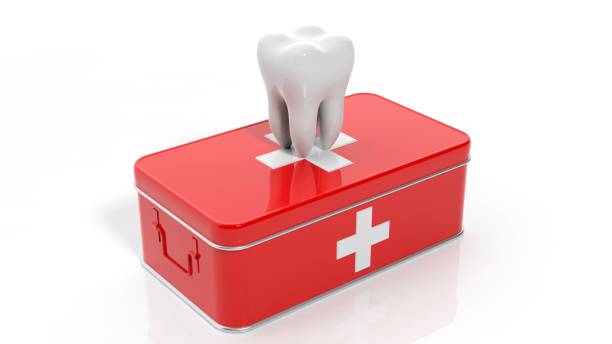Dental emergencies call for immediate and efficient action. Knowing what to do in the event of a severe toothache, a damaged tooth, or a knocked-out tooth can make a huge difference in protecting oral health and averting subsequent difficulties.
This post will walk you through few essential steps that you can take to manage different dental emergencies. By following these measures, you can control the matter quickly and achieve the best potential outcome for your dental health.
1. Remain calm and evaluate the situation
First and foremost when dealing with a dental emergency it is essential that you must remain at ease as you assess the situation. Panicking can make things worse and impair your judgment. Take a deep breath and think through the situation. Is there a lot of bleeding? Is the entire tooth lost? You can decide what actions are required by evaluating the current circumstance. You need to:
- Examine for Bleeding and Swelling
Look for symptoms of blood or edema in the afflicted area. Use a clean cloth or gauze pad and lightly tap the bleeding spot to control it. A dental expert must be consulted immediately if there is swelling, which may indicate an infection or damage.
- Assess the Pain Intensity
You should assess the level of pain you are feeling. It could indicate a more severe problem if the sensation is excruciating and strong.
2. Make a call to your reliable Dentist
Next, call your dentist immediately. Please provide as much information as you can about the nature of the emergency. Your dentist, who may assist over the phone, will explain what to do next. Please ensure that you have your dentist’s emergency phone line in case such a situation arises.
3. Preserve the Knocked-Out Tooth
In case if a tooth has been completely knocked out, taking a quick move is crucial to increase the chances of successful re-implantation. Follow these steps:
- Handle the Tooth Carefully Avoid touching the root of the tooth. Instead, hold it by the crown (the top part visible in the mouth). Handling the tooth gently will help prevent further damage.
- Transport the Tooth Safely If you can’t reinsert the tooth, keep it wet by placing it in a container with milk or saliva. This helps preserve the tooth until you reach your dentist
4. Pain management
Toothaches can be excruciating, but there are a few steps you can take to manage the pain before reaching your dentist:
- Rinse with Warm Saltwater
Dissolve half a teaspoon of salt in eight ounces of warm water and rinse your mouth with the solution. Saltwater will help reduce inflammation and alleviate pain temporarily.
- Apply Cold Compresses
Put an ice pack on the affected area over 15 minutes in one go. The part may become numb from the cold, temporarily reducing swelling and pain. Blood vessels can constrict, and bleeding can be slowed by placing an ice pack beside the location outside the mouth.
- Exercise Light Pressure
Gently press the bleeding spot with a clean towel or gauze pad. Keep gentle pressure on your wound for at least 10 minutes to stop bleeding.
5. Fracture teeth management
Be extra careful of your tooth while you wait to visit your dentist if it has fractured or broken.
- Put some water in your mouth and wash your mouth with warm water to clean the area around the fractured tooth.
- Cover the tooth with dental wax or sugarless gum to protect your tongue and cheeks from injury if the fracture has left a sharp edge or exposed nerves.
Although dental emergencies can be upsetting, you can manage them successfully with the appropriate information and quick action. Recall to maintain your composure, call your dentist, and take the necessary steps we’ve covered. You can reduce damage and pain and protect your oral health by acting quickly and seeking competent dental care.
Still have questions? For some common queries continue reading or call Dental360 to talk to a specialist (877) 786-0360.
Dental emergency FAQ’s
1. What should I do if I wake up with a toothache in the middle of the night?
Dial your dentist’s during-hours urgent line or, if any is available, go to a nearby emergency dental facility if you have a severe toothache after regular business hours.
2. How do I handle a broken tooth until I can see my dentist?
Rinse your mouth with warm water, cover the fractured tooth with dental wax or sugarless gum, and seek professional dental care as soon as possible.
3. Is seeing a dentist after a dental emergency necessary, even if the pain subsides?
Yes, following up with your dentist after a dental emergency is essential. They can assess the situation, provide appropriate treatment, and ensure proper healing.




